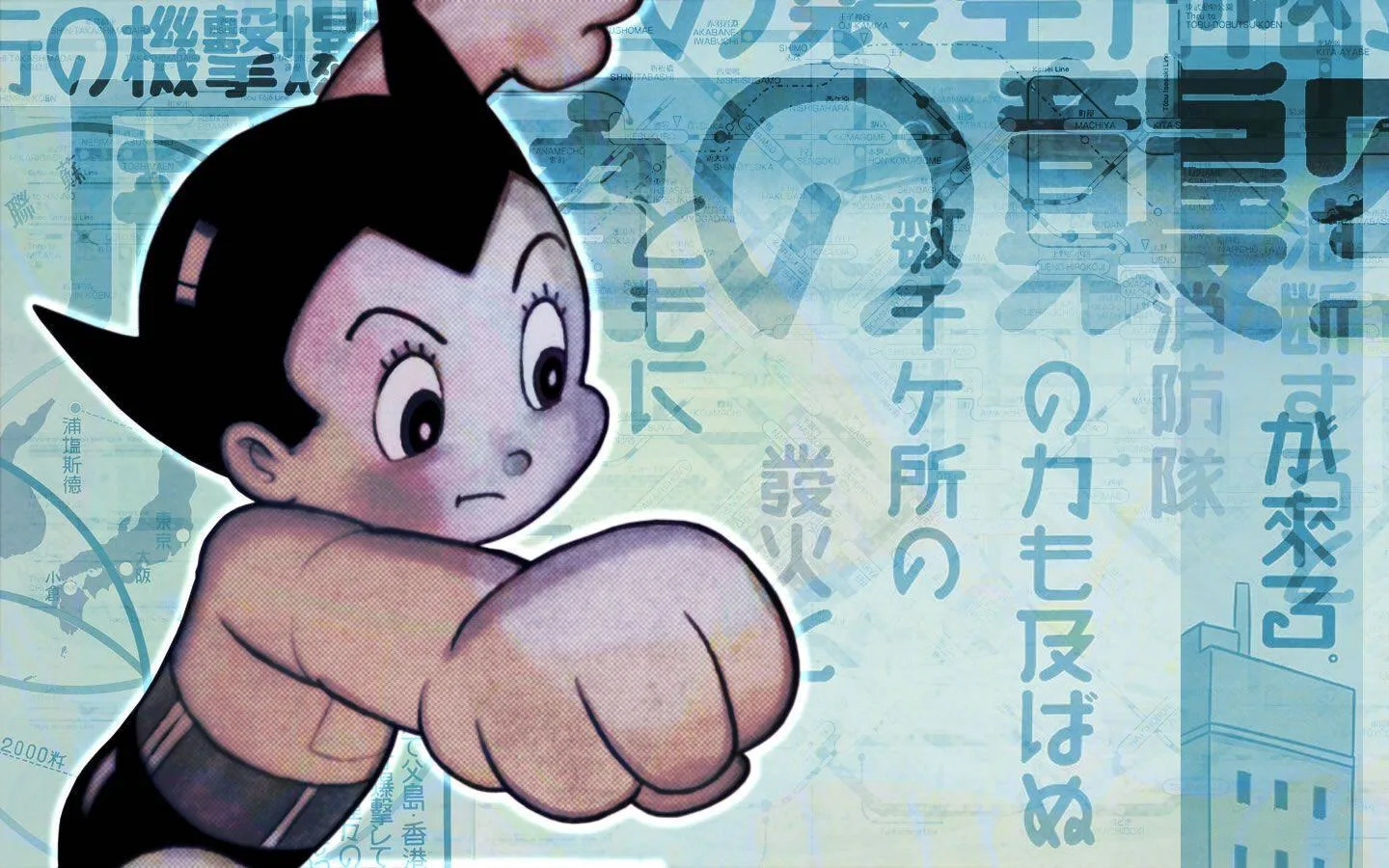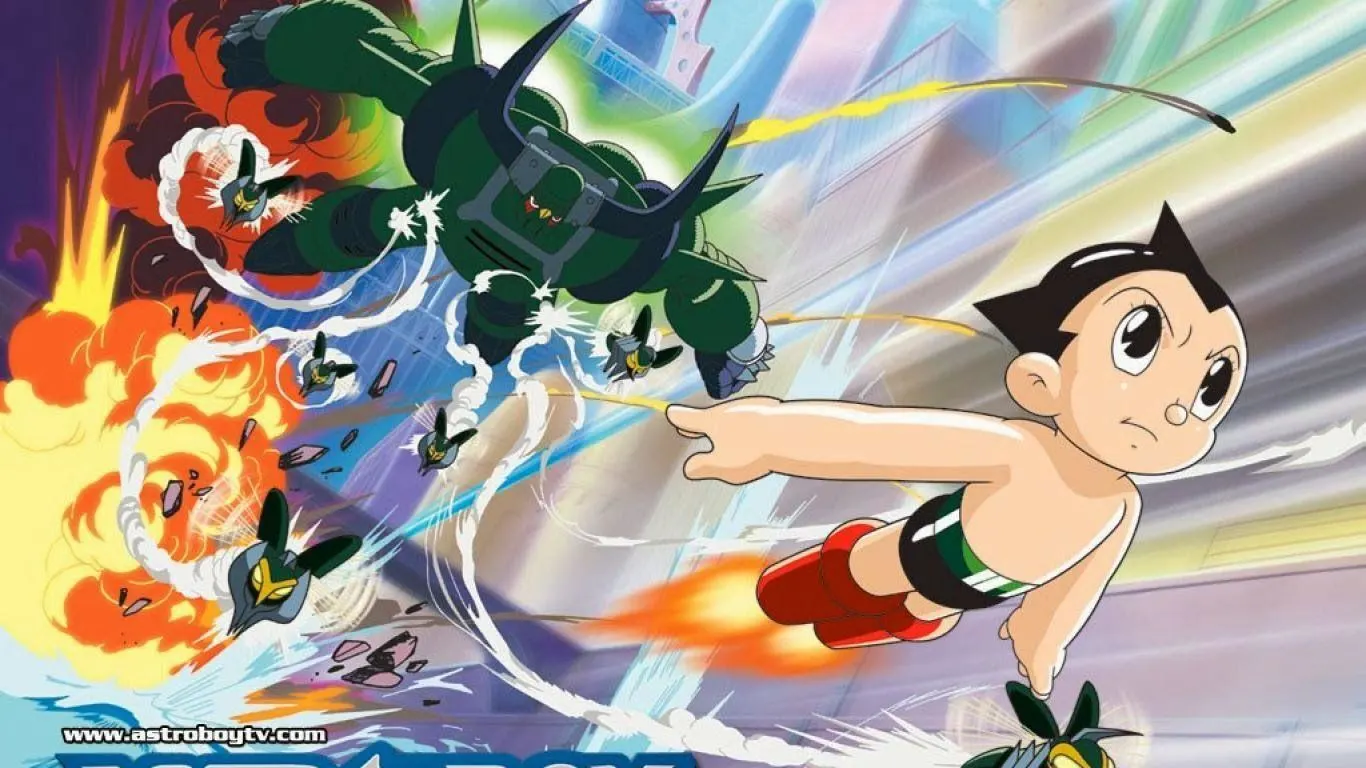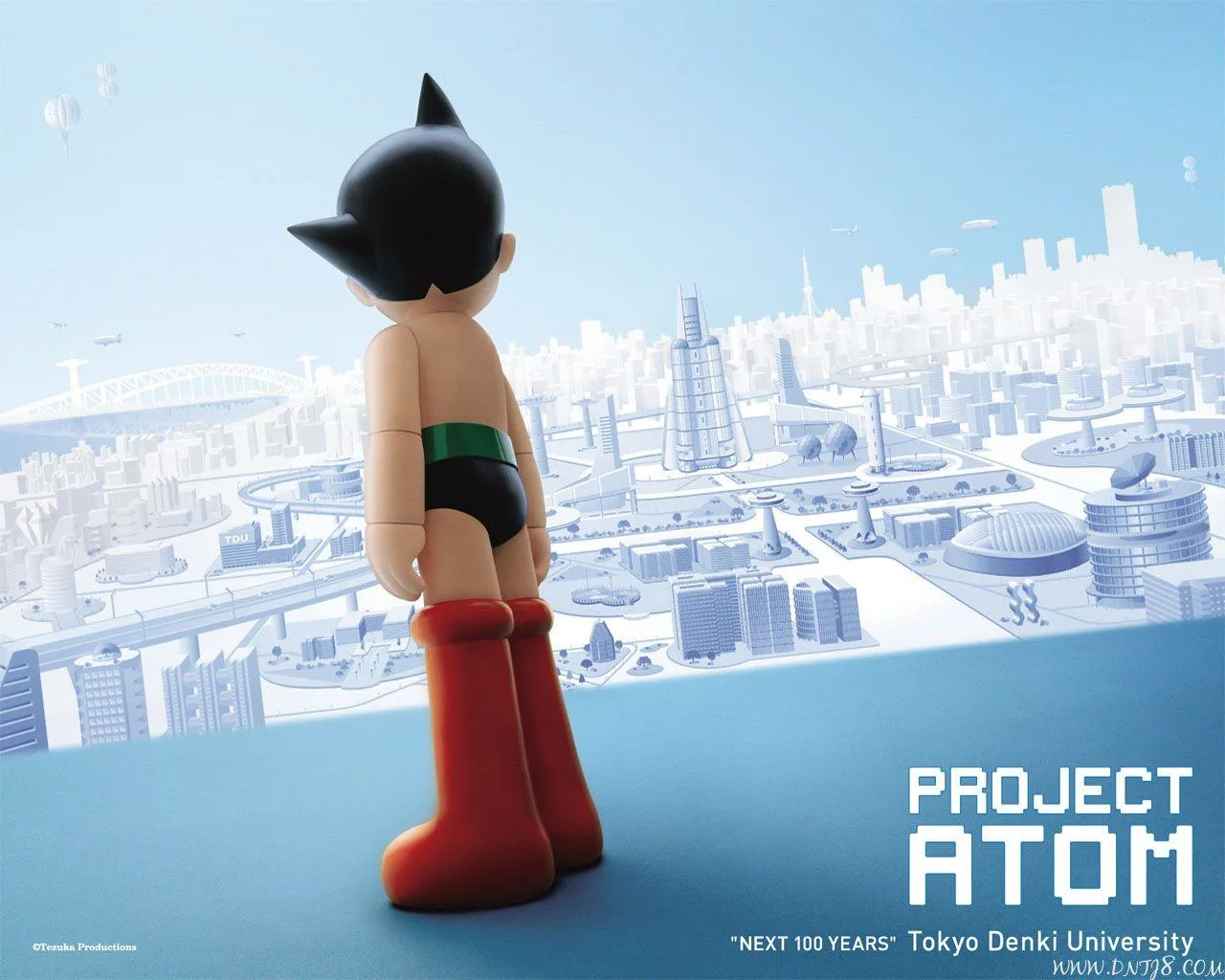Astro Boy – The Foundations of Japanese Animation
The history of Japanese animation would not be complete without mentioning Astro Boy (Tetsuwan Atom in Japanese), a foundational work created by the legendary Osamu Tezuka. First broadcast in 1963, this series laid the groundwork for what would become a distinctive and globally recognized anime style. At a time when animation was still in its infancy, Astro Boy introduced stylistic and narrative elements that would go on to influence generations of artists.
Tezuka’s approach was revolutionary: animation was no longer just entertainment for children, but a medium capable of telling deep and sometimes philosophical stories.
A New Visual Language and Aesthetic Identity
With its large expressive eyes, simple yet effective character designs, and deliberately minimalist animation due to budget constraints, Astro Boy introduced what would later become the defining visual codes of Japanese anime. The character design was a stark contrast to what American studios like Disney were producing at the time, favoring emotional expression over smooth motion.
This marked the emergence of a new and daring aesthetic, one that relied on symbolic imagery and the power of static shots rather than fluid animation.
As the series progressed, its visual style became more refined without sacrificing clarity. The backgrounds remained detailed yet functional, supporting the narrative without overwhelming it. This graphical minimalism, often seen as a constraint, became a signature of the show.
It created space for dynamic framing, intense close-ups, and dramatic timing—all of which would become staples of anime storytelling.
One of Tetsuwan Atom’s most striking visual features was its manga-like editing style. Scene transitions often used comic-book-like ellipses, fades, and fast-motion effects, creating a unique rhythm and pacing. This visual grammar would become one of the defining characteristics of Japanese anime as it evolved.

Emotional Power in a Melancholic World
From the first episodes, the impact was immediate: although the pacing was sometimes slow, the scenes were charged with dramatic intensity. Viewers were quickly drawn into the melancholic world of a little robot boy, created to replace a scientist’s deceased son. This tragic origin story, introduced right from the beginning, defied the expectations of lighthearted children’s programming.
The choice to use black and white at the time reinforced the somber and serious tone, highlighting the character’s loneliness in a sometimes hostile world.
What made Astro Boy especially striking was its ability to convey emotion, despite its stiff animation. Sadness, anger, fear—all were visible in Astro’s eyes, his slow gestures, and his silences.
The contrast between the harshness of the imagery and the tenderness of the message created a poetic tension that resonated with both children and adults alike.

Science, Society and the Soul of a Robot
Tezuka also infused his work with political and social metaphors. In a postwar Japan undergoing reconstruction, Astro Boy raised questions about the role of technology, the power of the state, and the nature of humanity itself. These were contemporary concerns, expressed through what was still a handcrafted animation style—but already a powerful one.
As the episodes unfolded, viewers discovered an endearing character torn between robotic power and human sensitivity. This duality was explored through philosophical narratives that posed ethical questions about consciousness, responsibility, and the role of science.
It was a bold choice at a time when animation was still widely perceived as merely child’s play.
Tezuka also pioneered an innovative technique known as the “bank system,” which involved reusing animated sequences with slight modifications. This saved both time and money while creating visual consistency between episodes. The system would later be widely adopted by Japanese animation studios and become an industry standard.
Legacy and Global Cultural Influence
When comparing the original Astro Boy episodes to later remakes (notably the 1980 and 2003 versions), one can see how much the aesthetics have changed: sharper lines, vivid colors, omnipresent lighting effects…
And yet, the heart of Tezuka’s style remains intact—a lasting testament to his influence.
Tezuka himself was fascinated by Western animation, especially Walt Disney’s work—and he never hid it. But he succeeded in creating a uniquely Japanese visual identity, laying the foundation for a cultural and artistic movement that still captivates the world today.

ASTRO BOY – The Origins of Japanese Animation and Tezuka’s Timeless Legacy
Table of Contents
Astro Boy – The Foundations of Japanese Animation
The history of Japanese animation would not be complete without mentioning Astro Boy (Tetsuwan Atom in Japanese), a foundational work created by the legendary Osamu Tezuka. First broadcast in 1963, this series laid the groundwork for what would become a distinctive and globally recognized anime style. At a time when animation was still in its infancy, Astro Boy introduced stylistic and narrative elements that would go on to influence generations of artists.
Tezuka’s approach was revolutionary: animation was no longer just entertainment for children, but a medium capable of telling deep and sometimes philosophical stories.
A New Visual Language and Aesthetic Identity
With its large expressive eyes, simple yet effective character designs, and deliberately minimalist animation due to budget constraints, Astro Boy introduced what would later become the defining visual codes of Japanese anime. The character design was a stark contrast to what American studios like Disney were producing at the time, favoring emotional expression over smooth motion.
This marked the emergence of a new and daring aesthetic, one that relied on symbolic imagery and the power of static shots rather than fluid animation.
As the series progressed, its visual style became more refined without sacrificing clarity. The backgrounds remained detailed yet functional, supporting the narrative without overwhelming it. This graphical minimalism, often seen as a constraint, became a signature of the show.
It created space for dynamic framing, intense close-ups, and dramatic timing—all of which would become staples of anime storytelling.
One of Tetsuwan Atom’s most striking visual features was its manga-like editing style. Scene transitions often used comic-book-like ellipses, fades, and fast-motion effects, creating a unique rhythm and pacing. This visual grammar would become one of the defining characteristics of Japanese anime as it evolved.
Emotional Power in a Melancholic World
From the first episodes, the impact was immediate: although the pacing was sometimes slow, the scenes were charged with dramatic intensity. Viewers were quickly drawn into the melancholic world of a little robot boy, created to replace a scientist’s deceased son. This tragic origin story, introduced right from the beginning, defied the expectations of lighthearted children’s programming.
The choice to use black and white at the time reinforced the somber and serious tone, highlighting the character’s loneliness in a sometimes hostile world.
What made Astro Boy especially striking was its ability to convey emotion, despite its stiff animation. Sadness, anger, fear—all were visible in Astro’s eyes, his slow gestures, and his silences.
The contrast between the harshness of the imagery and the tenderness of the message created a poetic tension that resonated with both children and adults alike.
Science, Society and the Soul of a Robot
Tezuka also infused his work with political and social metaphors. In a postwar Japan undergoing reconstruction, Astro Boy raised questions about the role of technology, the power of the state, and the nature of humanity itself. These were contemporary concerns, expressed through what was still a handcrafted animation style—but already a powerful one.
As the episodes unfolded, viewers discovered an endearing character torn between robotic power and human sensitivity. This duality was explored through philosophical narratives that posed ethical questions about consciousness, responsibility, and the role of science.
It was a bold choice at a time when animation was still widely perceived as merely child’s play.
Tezuka also pioneered an innovative technique known as the “bank system,” which involved reusing animated sequences with slight modifications. This saved both time and money while creating visual consistency between episodes. The system would later be widely adopted by Japanese animation studios and become an industry standard.
Legacy and Global Cultural Influence
When comparing the original Astro Boy episodes to later remakes (notably the 1980 and 2003 versions), one can see how much the aesthetics have changed: sharper lines, vivid colors, omnipresent lighting effects…
And yet, the heart of Tezuka’s style remains intact—a lasting testament to his influence.
Tezuka himself was fascinated by Western animation, especially Walt Disney’s work—and he never hid it. But he succeeded in creating a uniquely Japanese visual identity, laying the foundation for a cultural and artistic movement that still captivates the world today.